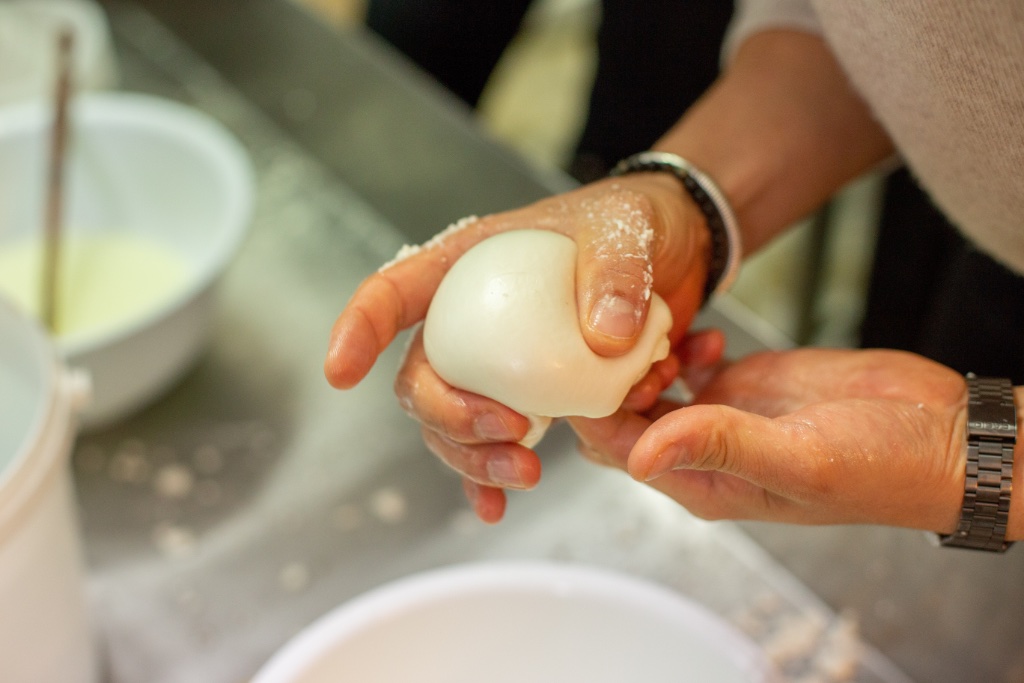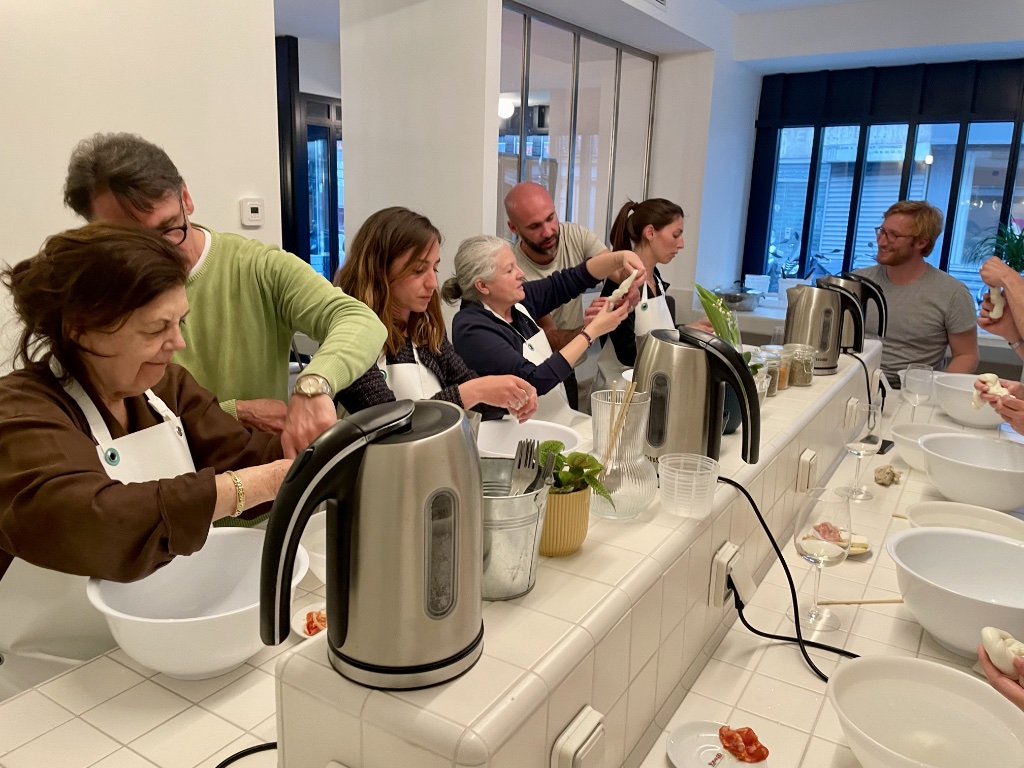It may sound cheesy, and it is, literally but not figuratively. I’m talking about making mozzarella in Paris. Why would one want to do such a thing? Because the best mozzarella is made in Italy and needs to be eaten within a day or two after it is made. It does not travel well, losing its richness and becoming spongy. By the time it gets here, it’s not worth eating – ask any Italian of good taste.
I learned those important facts last week when I took a mozzarella-making class at La Latteria (151, rue du Faubourg Poissonnière) in Paris, a handsome new boutique and cheese-making workshop in a former garage in the ninth arrondissement.
Before we donned our smart white plastic aprons, we were handed a glass of a fine Prosecco, a civilized introduction to the art of Italian cheese-making. Our professors were Julien Carotuneto, founder of cheesemaker Nanina (which has a large facility in the suburb of Ivry, where all the cheese is made by hand), and Franco Picciuolo, an Italian casaro (cheesemaker) from Campagna whose great-grandfather was also a cheesemaker. Franco started us off with a joke-filled talk about the niceties of mozzarella made from buffalo milk.
It should be noted that if you take this mozzarella-making class, which is limited to eight participants and taught in French (they hope to English-language classes in the future), you will not actually learn to make mozzarella from scratch, just the final steps, since participants in the workshop are provided with the curd and whey already separated. Those who want to do the whole process themselves at home can watch this video.
The fun starts when you get your hands dirty, or should I say greasy, from the fat in the curd. Step one: crumble up the curd into small bits. Then pour boiling water over it and stretch the curd with a chopstick. After the water is poured off, knead a little – not too much or it will get hard – and form it into a smooth, shiny ball with your hands. Give the end a pinch, and you’re done. Easy! To make sure we had mastered it, we repeated the process, but this time Franco showed us how to form the cheese into a braid (treccia) rather than a ball.
The resulting cheese was creamy and flavorful, as promised, and we got to take ours home; mine was a fantastic addition to a pizza (shamefully, a frozen one; don’t tell Franco) and also delicious on its own. If you don’t have the time or inclination to make your own, you can still get fresh, high-quality buffalo mozzarella at La Latteria. Eat it the same day if possible and don’t put it in the fridge. Otherwise, mozzarella from Nanina can be found in some of Paris’s best restaurants, including Septime and Ducasse-owned eateries.
La Latteria, which is now a partner of Wecandoo, organizer of artisanal workshops (everything from pottery to papermaking), sells mozzarella that is handmade in its facility in the suburb of Ivry and in the Latteria in Paris, which also carries other kinds of cheese, along with a number of high-quality products (at quite reasonable prices compared with other fine groceries of this type) from Italy and elsewhere, including that fine Prosecco, excellent charcuterie, canned Italian cherry tomatoes (a must for sauces, only €2), designer pasta, artisanal beers, olives and olive oil, and so on. You can also have a seat in La Latteria and try some of that excellent charcuterie and other products with a glass of wine.
After this cheesy experience, you will never again be able to settle for a spongy, plastic-wrapped mozzarella sold in a supermarket. That can only be a good thing.
Favorite



